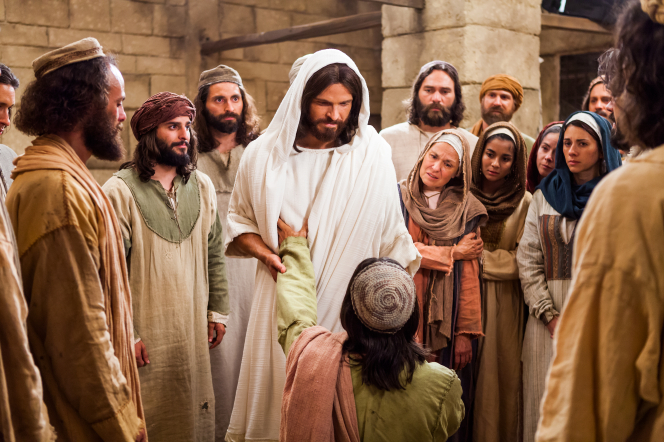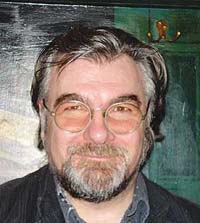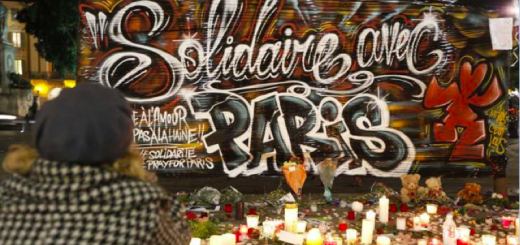Family of Jesus – Tobias Churton

 Tobias Churton is a British scholar of Rosicrucianism, Freemasonry, Gnosticism and other esoteric movements. He is lecturer at Exeter University and author of Gnostic Philosophy, The Magus of Freemasonry, and Freemasonry and other works. Churton has made several television programmes including Gnostics, a 4-part drama-documentary series made for Channel 4 (UK) by Border TV and accompanying book broadcast in 1987 and repeated in 1990. Churton's studies include critique of heresiologists perceptions on the role of women in these "unorthodox" Christian movements: Verghese Pampalany
Tobias Churton is a British scholar of Rosicrucianism, Freemasonry, Gnosticism and other esoteric movements. He is lecturer at Exeter University and author of Gnostic Philosophy, The Magus of Freemasonry, and Freemasonry and other works. Churton has made several television programmes including Gnostics, a 4-part drama-documentary series made for Channel 4 (UK) by Border TV and accompanying book broadcast in 1987 and repeated in 1990. Churton's studies include critique of heresiologists perceptions on the role of women in these "unorthodox" Christian movements: Verghese Pampalany
Mark 6.3 tells that Jesus (Yeshua or Joshua) had brothers: James( properly Jacob) Joses (Joseph or Yusef) Simon(Shimon) and Juda(called Judas in Mathew). Unnamed sisters are also mentioned.
The first leader of Jesus people in Jerusalem was James, a tradition heavily obscured, if not perverted, in the Pauline Acts of the Apostles.
Many today are actively looking beyond the unity of doctrine imposed by religious authorities. Many are suspicious that the Churches obscured or distorted deeper or higher truths than the stark commands of righteousness offered with threats to faithful and faithless alike for two millennia. Social and psychological changes, archeological discoveries, science and free thinking scholarship have loosened the holds of dogma and opened up new vistas.
The Roman Church wanted a super‐real character, preferably with no character at all, an object of worship.
The faith of Nicaea argued over the at the behest of Constantine in Nicaea in 325 was crowned by the Definition by the epoch making Council of Chalcedon.
After the 5th century Catholic doctrine was rock solid on every spiritual and governmental issue. What was held true in Rome was supposed to be held true everywhere.
“Everything in New Testament has been fingered, lifted,compared, sewn in, re‐ sewn, interpreted, reinterpreted, over‐interpreted, attacked, defended,denied, obscured, translated,transliterated ,transmogrified or tranquillised,infinitely annotated, theologically violated “sacred text.” There are so many commentaries, concordances, conferences, councils, canonical constipations, footnotes, references, cross references, indexes,cross indexes, critical evaluations by liberals, conservatives, Catholics, Protestants, Jews, Muslims, Hindus, atheists, communists, fascists, philologists, evangelicals, , popes, bishops, priests, pundits, persons known, unknown, radicals, nuns, revisionists, rock’n’rollers, journalists, nobodies and numb‐skulls that any kind of “fair assessment” has become an impossibility. You simply join one of the one of the “schools of thought” and get on with it, or not. The New Testament has been fought over for so very long that it has ceased to make any kind of coherent sense sensible in all its parts to everybody . As is common knowledge any one can find a quote to support his argument. And that is basically what the New Testament is, or has become: a bag of quotes, “ copy right free”. It cannot prove anything that everybody will agree with. “ Still the New Testament is with us. It is not going to go away.”
The authority of the New Testament documents lies in their canonical status. This means that the Church authorities authorised their use in the churches because they deemed to have been so employed universally from apostolic times i.e.sometime between the first century and the mid second century. Works definitely in the “word of God” category formed what was called “canon”. Outside of that were books that might be fairly inspired or interesting, but you could not use them to produce doctrine, at least officially. Irenaeus of Lyons in Gaul (CE 180) said there were four gospels because God ordained a harmony in the world , four points of the compass, four winds and,well four gospels. The rest were either “the word of man” or heretical, inaccurate, fanciful or deceitful. The Catholic canon was more or less agreed and insisted upon by the middle to late 4th century, when a final clearing of “apocryphal works” and outright banning of “heretical” works was undertaken as bishops acquired and employed imperial legal support to weed out Christians who did not jump when the bishops spoke. By CE 400 “right doctrine” or orthodoxy had the full backing of the state.
And the bishops said this: what is to be found in the canon counts; anything else has no authority. It is fairly circular argument, but effective. The authorities decide what is authoritative. The authorities works condition the doctrine if the authorities concur. Nevertheless,in favour of the canon being seen as the primary source is the fact that the majority of the documents in the canon appear, in the main, to have been the oldest surviving records of the first century of the Christian experience. However, we have no original documents to compare our present canon with. Complete versions are not extant before the 4th century. The documents reflect their times. We have little significant back‐up or supportive documentation contemporary with many of the events described. The Sermon of the Mount, for example, or the feeding of the 5000 are not mentioned any where else but in the gospels.
Every New Testament work is the result of editorial choices made by writers, editors and compilers reliant on the memories or best guesses and prejudices of others.there may be eye witness testimony here and there; there may be what is politely called “oral tradition”; some statements may have been checked. But in order to grasp their value in establishing historical facts, rather than doctrine, it should be understood that there was no “Golden
Age” of early Church. The New Testament was not produced in Dream Factory. The choices made by writers and editors about Jesus, his followers and enemies reflect their political and doctrinal position. Some times , that is not easy to determine. The New Testament is Christocentric.
Nazareth
The problem is that Nazareth was unknown as a city before its appearance in the gospels. Josephus, who lived virtually next door and was charged with fortifying Galilean towns against the Romans, never mentioned it, nowhere is Nazareth mentioned in the Hebrew Scriptures. Archeology in Nazareth has uncovered no Roman‐period remains from before the middle of the 2nd century. Yet even Matthew, who knows Joseph and Mary are Judeans, has Jesus’ family finding haven in” Nazareth”.
The real Jesus.
The Christian Church has purloined the historical Jesus, repackaged and branded him. His family allegedly rejected him, so the church has rejected the family and adopted, morphed to suit its agenda. At the initial stages of the transformation of the Christian religion to a Roman religion Jesus was projected as Zeus/Apollo and later to something else to suit the purposes in mind. Jesus has been shaped and reshaped, altered and remodelled that some historians doubt his very existence.. The paternity of Jesus has been, as it were, killed off or wiped out and his mother has been penetrated by a dogma. Is there something neurotic about Christian theology always ready to explode at the hint of doubt?
We may add to this diagnosis a degree of schizophrenia detectable in the tension between Jesus, James and the family with their humane spiritual righteousness and the Pauline anti‐law, atonement dominated “evangelical” forensic mysticism. Paul was no friend of the family. That is for sure. The history of Christianity is largely written as a long theological row that shows no sign of abatement. Jesus existed: he had a message but what is it?

















